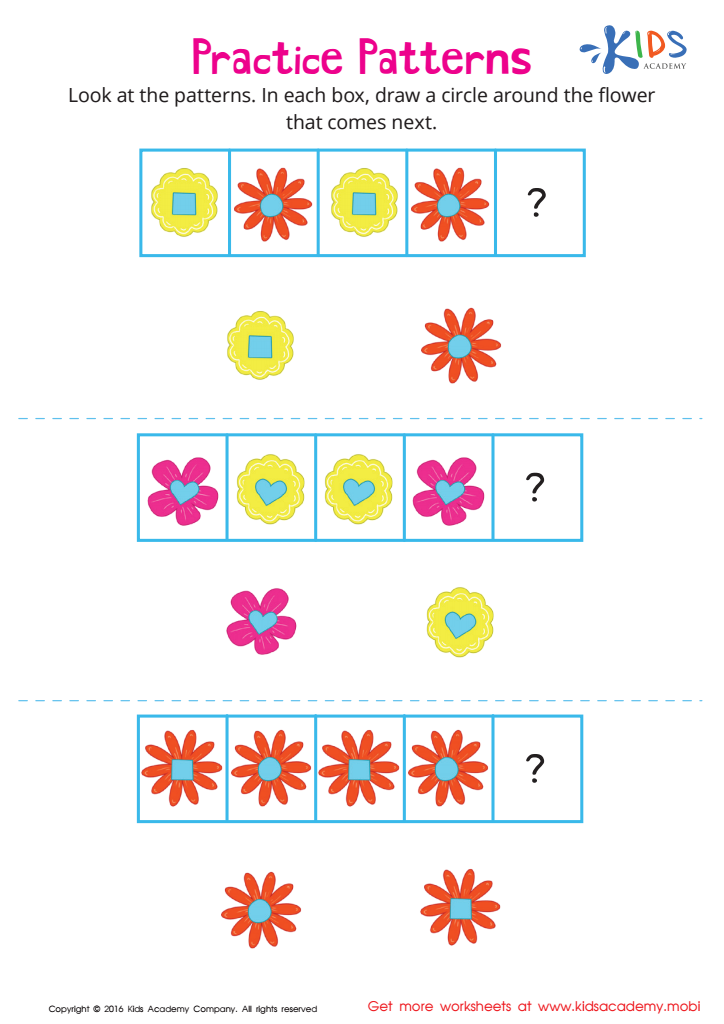Pattern recognition Normal Patterns Worksheets for Ages 4-5
5 filtered results
-
From - To
Discover our engaging Normal Patterns Worksheets designed specifically for ages 4-5! These colorful, interactive activities provide a fun way for young learners to develop essential pattern recognition skills. Our worksheets help children identify, create, and extend patterns using familiar and exciting visuals. They'll enhance their cognitive abilities while sharpening their math skills—all in a delightful, playful manner. Perfect for home or classroom use, these resources promote critical thinking and problem-solving. Give your little ones the confidence to explore patterns in their everyday lives, laying the foundation for future learning! Explore our collection today and watch your child’s skills blossom!
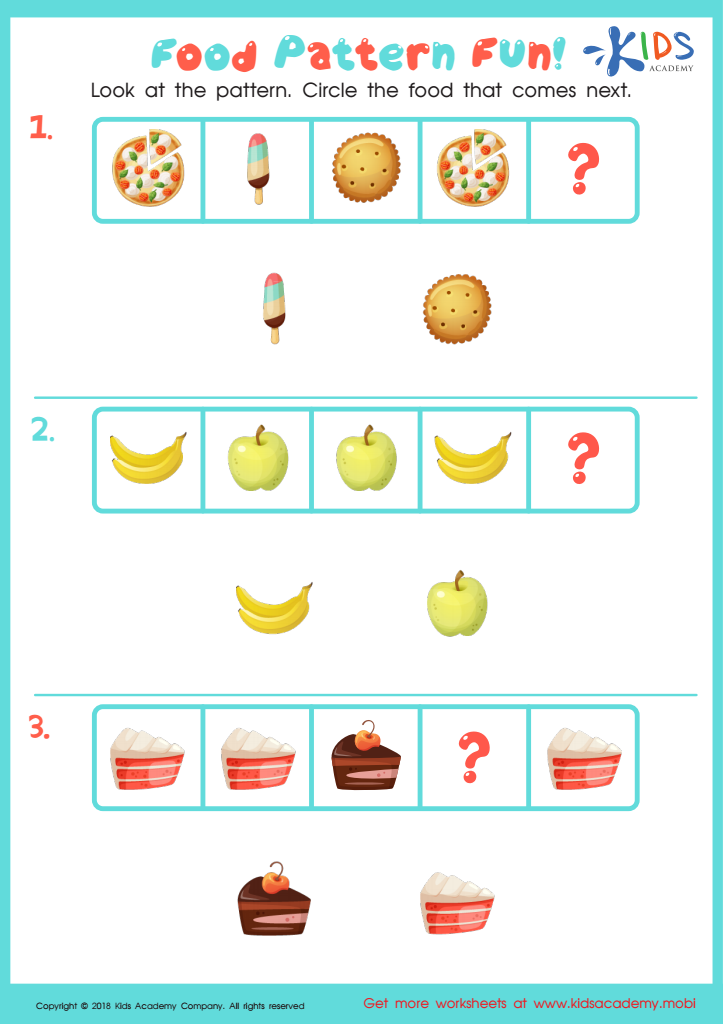

Food Pattern Fun Worksheet
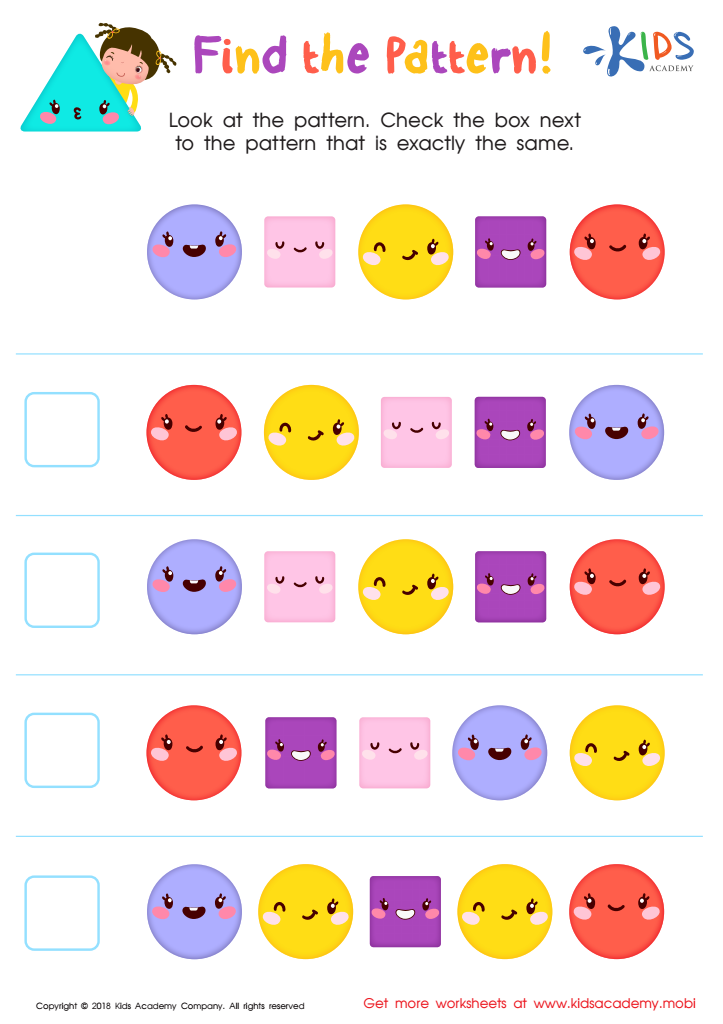

Find the Pattern Worksheet
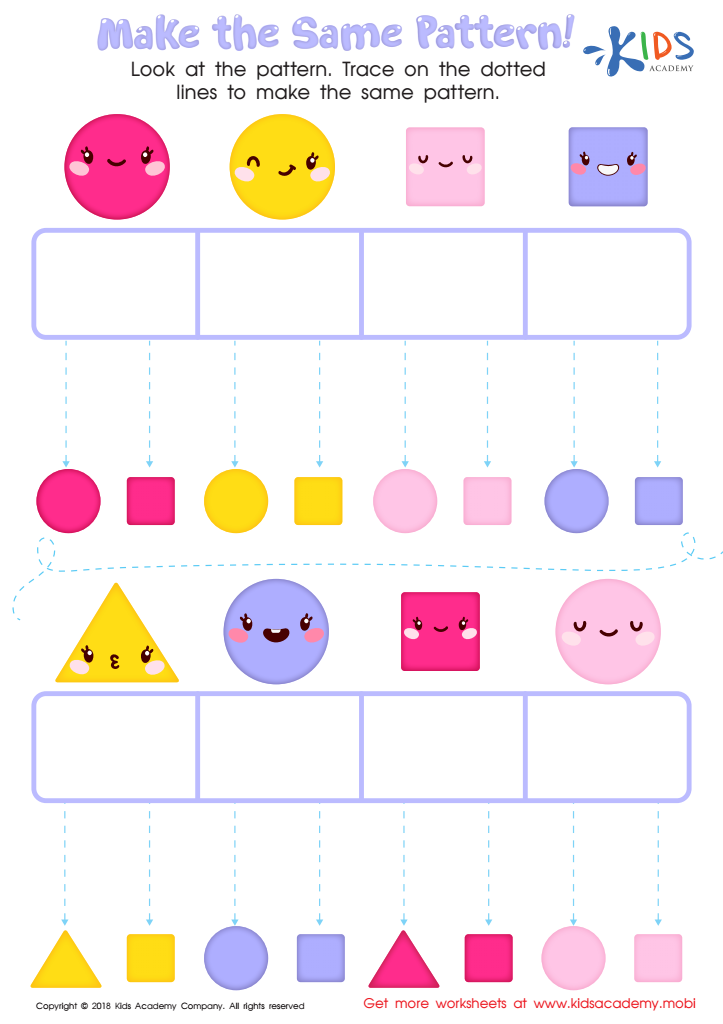

Make the Same Pattern Worksheet
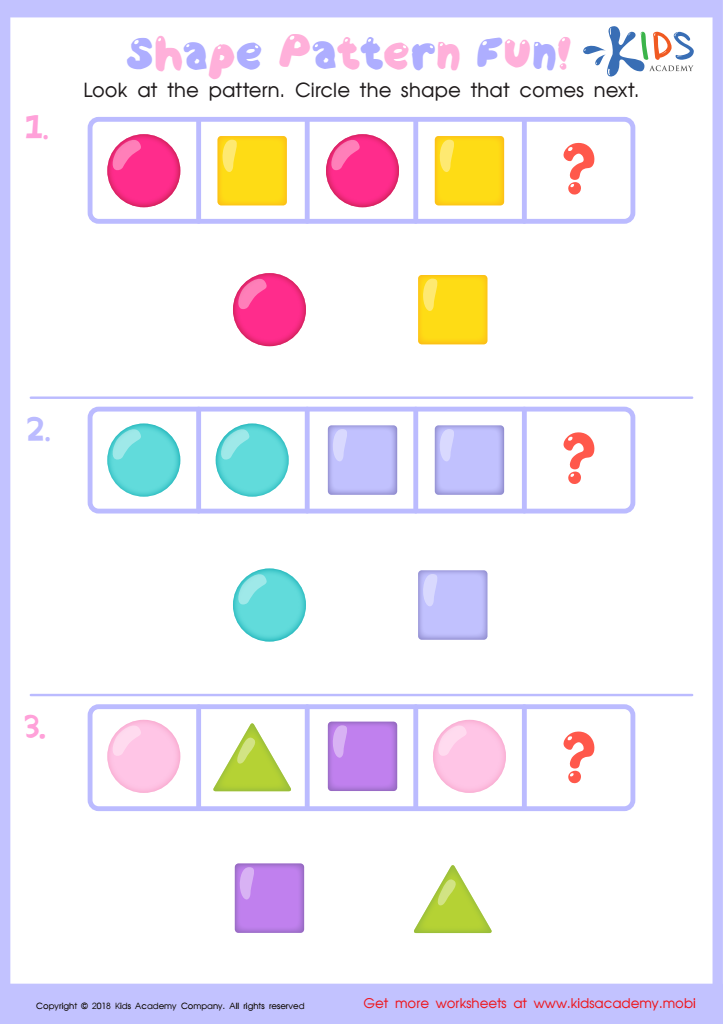

Shape Pattern Fun Worksheet
Parents and teachers should care about pattern recognition for children ages 4-5 because it forms a foundational cognitive skill essential for early childhood development. Recognizing and creating patterns helps children make sense of the world around them, enhancing their problem-solving abilities. By engaging in pattern activities, children learn to identify relationships and sequences, fostering critical thinking skills.
Moreover, mastering normal patterns helps prepare young learners for future mathematical concepts. Understanding patterns aids in early math skills, such as counting, sorting, and classification, all of which are crucial for building a strong mathematical foundation. It also supports language development as children describe patterns using vocabulary that encourages them to think abstractly.
Engaging with patterns can also promote fine motor skills and hand-eye coordination through activities like drawing, building, and crafting, thus integrating physical and cognitive development. Additionally, recognizing and creating patterns can lead to increased observational skills, attention to detail, and memory enhancement.
Overall, normal pattern recognition not only contributes to academic readiness but also aids in the holistic development of children, fostering curiosity and a love for learning. By supporting this skill, parents and teachers set the stage for future success in both mathematics and other areas of life.
 Assign to My Students
Assign to My Students

